In reality, besides bees and butterflies, there is an astonishing number of animal species that perform the vital function of pollination, playing a crucial role in the survival of flowering plants.
When it comes to pollinators, most people immediately think of insects like bees and butterflies fluttering from one flower to another. In fact, there are an incredible number of animal species that are essential to the existence of flowering plants.
Let’s explore some of nature’s surprising pollinators, how they assist plants in completing their life cycles, and their significant contributions to maintaining a healthy ecosystem and biodiversity.
Mosquitoes
Believe it or not, mosquitoes are indeed pollinators. In fact, the primary food source for mosquitoes is nectar, not blood.
Like bees and butterflies, mosquitoes transfer pollen from one flower to another as they feed on nectar, helping plants to form seeds and reproduce. Only when a female mosquito is ready to lay eggs does she seek out a protein source from blood. Male mosquitoes only consume nectar and never drink blood.
Chocolate Flies
Cacao flowers, which are the size of a coin, have complex petals that curl down around their stamens, making it difficult for larger pollinators to access them.
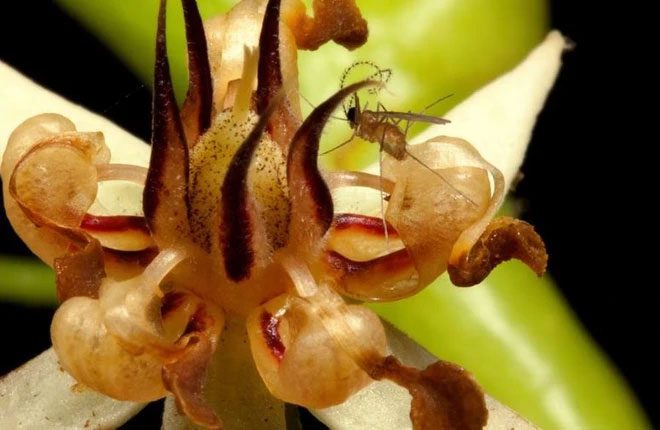
A chocolate fly feeding on nectar and pollinating cacao flowers. (Source: National Geographic)
As a result, the chocolate fly, a tiny striped fly no bigger than a pinhead, has become the primary pollinator for cacao plants. They work tirelessly at dusk and dawn, preferring the shaded, lush environments of tropical forests like the Amazon Basin.
Without this fly, chocolate would be extremely rare worldwide.
Cape Spiny Mice
The Cape spiny mouse from South Africa, originating from the savanna, is a delicate omnivore with the skill to lick nectar from flowers without eating or damaging them.
The flowers they choose belong to the nectar-rich Protea plant family. Like other mammalian pollinators, when spiny mice poke their faces into flowers to sip nectar, pollen clings to their fur and is transported to the next flower they visit.
Bats
Bats are perhaps the most well-known pollinators, responsible for pollinating over 500 plant species, including mangoes, bananas, durians, guavas, and agave (used to make tequila).
Bats are nocturnal and are attracted to pale-colored flowers, unlike daytime pollinators.
Some species, like the Mexican long-tongued bat, are specifically adapted for this task with long, slender tongues that can reach into tubular flowers.

A Mexican long-tongued bat feeding on nectar. (Photo: Getty)
Additionally, these mammals help with seed dispersal. When they eat fruit and excrete seeds, new plants have the opportunity to grow.
Lemurs
About 10% of the more than 100 lemur species native to Madagascar are pollinators.
This unique primate plays an important role as “gardeners” in the island nation’s forests, promoting the growth of new plants by pollinating and dispersing seeds.
Many lemur species eat nectar, equipped with long tongues that allow them to access flowers without damaging them, along with narrow snouts for pollen to adhere to.
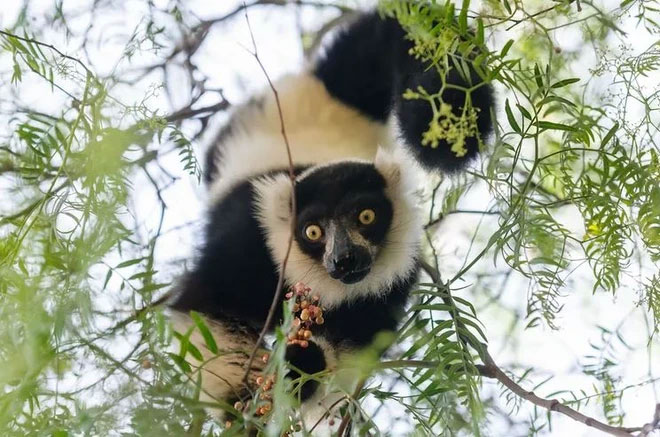
Black and white ruffed lemur. (Source: Shutterstock)
Ruffed lemurs—including red ruffed lemurs and black-and-white ruffed lemurs—have fine fur rings around their necks that easily collect pollen as they consume nectar and carry it to the next flowers.
Like bats, lemurs consume large quantities of fruit and disperse seeds throughout the forest as they forage.
Australian Sugar Gliders
The Australian sugar glider is believed to be a key pollinator for native plants in Australian forests, including the cone-shaped flowers of the Banksia species.
This small marsupial consumes a variety of flowering plants and nectar, along with the sap of eucalyptus and acacia trees. They carry pollen on their bodies as they glide through the vast Australian forests in search of their next meal.
Kinkajous
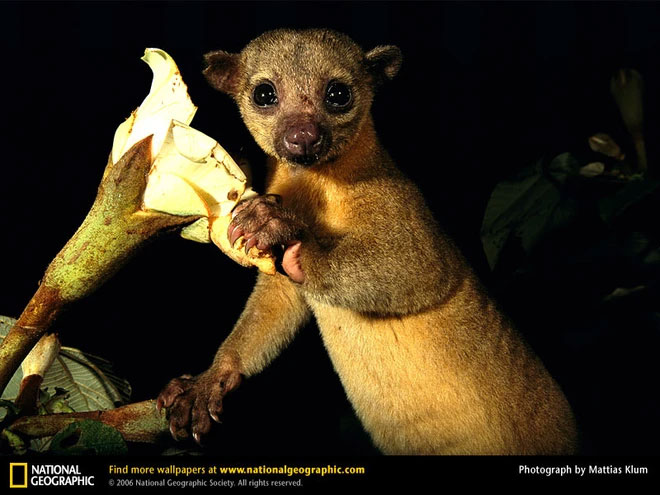
A kinkajou beside its favorite flower. (Source: National Geographic)
While they occasionally raid beehives for honey, kinkajous spend more time feeding on nectar.
In the Amazon rainforest ecosystem, kinkajous move from one flowering tree to another, particularly balsa trees, to feed on nectar and pollinate trees as they go.
Elephant Shrews
The Cape rock elephant shrew is an astonishing pollinator. They have a preference for the low-growing Protea humiflora, a type of Protea shrub.
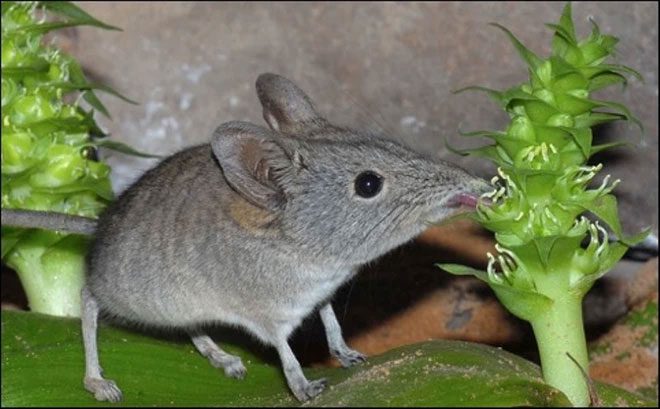
Cape rock elephant shrew. (Source: wildmammal).
This plant produces very sweet nectar that attracts many types of insects. The Cape rock elephant shrew does not drink nectar but searches for insects within Protea flowers to eat.
Their long trunk-like noses inadvertently collect pollen from one flower and transfer it to others while foraging for food.
Mongoose
Insects are not the only ones attracted to the sweet nectar of these plants. Although they are carnivorous, the Cape gray mongoose is also fond of the nectar from the shrubs and Protea plants of South Africa.
While searching for this sweet liquid, they carry pollen on their snouts from one flower to another.
Birds

Worldwide, there are 2,000 species of nectar-feeding birds, as well as insects and spiders living in nectar-rich flowers, making them vital pollinators for wildflower species across the planet.
Important nectar-feeding bird species include hummingbirds in the Americas; honeycreepers in Hawaii and Australia. Additionally, the brush-tongued parrot in New Guinea and sunbirds in Asia and Africa serve as intermediaries for transferring tropical pollen.
Lizards
Lizards are unexpected pollinators, but they are extremely important.
For example, the Noronha lizard pollinates the native mulungu tree on the Fernando de Noronha archipelago in Brazil. Meanwhile, on the island of Mauritius, the blue-tailed lizard is the primary pollinator for the rare Trochetia flower.
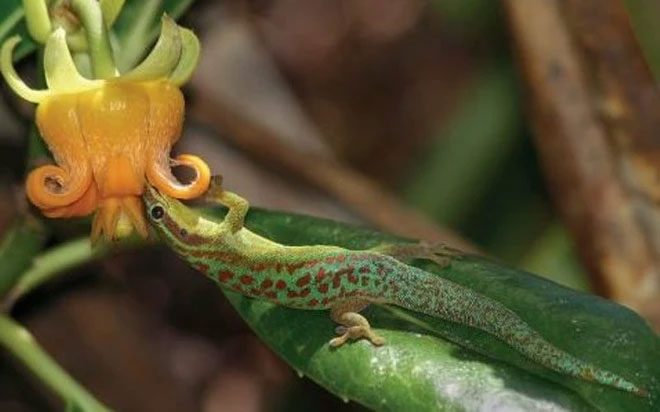
A flower of the endemic Mauriti Roussea simplex being pollinated by a blue-tailed lizard. (Source: Telegraph)
Both of these reptiles play a vital role in supporting the survival of flowering plants on islands with few insects visiting the flowers.


















































